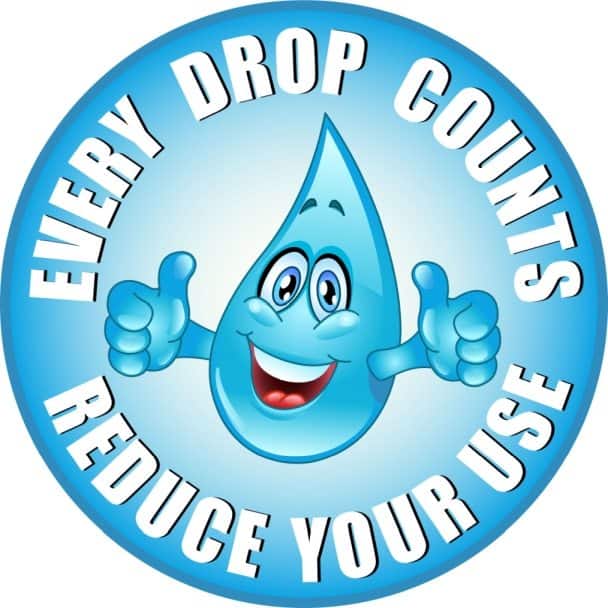Ways to Reduce Water Use in Your Home

Many people don’t really put too much thought into turning on the tap in their house and having fresh water come out. In fact, far too many people think that way. Washing dishes, bathing, doing the laundry, or just pouring a glass of good old H2O; you probably expect water to be there when you need it.
Here’s some food for thought: Did you know that while most of the surface of the earth is covered with water, nearly 98% is in oceans, seas, or other bodies of salt water, which isn’t safe for human consumption? As for the remaining 2%, most of it is trapped in ice caps. What does that mean to us? It means that there’s only a very small amount of fresh water – a vital natural resource – available for us to use. That really puts expecting water to be there when you need it into perspective, doesn’t it?
As if that isn’t enough to make you want to think twice about how you use water in your home, consider the fact that conserving water will help you reduce your energy use and save you money, too.
Water Conservation Tips for the Home
Whatever the reason is that you want to cut back on your water consumption, here are 10 simple ways that you can help you significantly reduce the amount of water you are using in your home.
Turn off the Faucet While Brushing
If you leave the water running while you’re brushing your teeth, turn it off! This bad habit can waste as much as 10 gallons of water a day (depending on the size of your family).
Instead of leaving the water running, simply rinse your toothbrush prior to brushing your teeth, turn off the tap, and rinse the toothbrush again when you are done brushing. It sounds like such a simple concept, but it really is amazing how many people let the water run when they brush.
Fix those Dripping Taps
Not only is listening to the constant drip from a leaking faucet annoying, but it could be wasting an incredible amount of water. It’s hard to say how much water because every faucet and every drip is different. However, on average, one gallon of water is equivalent to a little more than 15,000 drips. That might not seem like a big deal, but if your faucet is dripping once a second, 24 hours a day, you would be wasting nearly 5 gallons of water each day. Now that’s a lot of water.
Wash Full Loads of Laundry
Instead of washing small loads, wait until you have enough to fill up your entire washing machine.
Older washing machines use up to 45 gallons of water per load. High-efficiency machines use much less; between 14 and 25 gallons. While a high-efficiency machine is certainly the better option (consider switching to one to save money even when you are washing full loads!), to save water, only wash full loads of laundry.
Install Low-Flow Fixtures
As the name suggests, low-flow fixtures are designed to use less water. How much water can they save? A low-flow toilet can save anywhere between 55% and 77%; low-flow faucets can save as much as 50%, and a low-flow showerhead can save around 60% of your household water consumption. Of course, these amounts vary, as every household uses a different amount of water. But, no matter how much water you and your family use, these water saving fixtures could really help you cut back on your water consumption.
Only Take Baths Once in a While
It might seem like a shower uses more water than a bath because the water is constantly running. In reality, baths use much more water. On average, it takes up to 50 gallons of water to fill a tub. The average shower in America is about 8 minutes long and uses around 17 gallons of water. Install a low-flow showerhead and aim to take shorter showers and you’ll save even more water.
Use Water Wisely While Washing the Dishes
If you wash your dishes by hand, instead of letting the water run. If you have two sinks, fill one up with soapy water and the second with clear water. Wash the dishes in the first sink and rinse them in the second one. If you don’t have two sinks, use two bins.
If you prefer to use the dishwasher, wait until it is completely full to turn it on. Also, scrap them off to avoid clogging the drains and having to rewash the dishes. If your dishwasher has a water-saving cycle, use it.
Don’t Run Water to Rinse Produce
Rinsing off fruits and veggies under a flow of water from your faucet might seem harmless, but you could be using a tremendous amount of water unnecessarily. Instead of keeping the faucet turned on, fill up a basin or bowl with water and use it to clean your produce. Plus, you’ll probably be able to get your food cleaner, especially if you let it soak or scrub them.
Water Your Landscaping Wisely
Be mindful while you’re watering your lawn and garden. Put your sprinkler system on a timer to cut back on the amount of water you are using. Whenever possible, use a watering can instead of a hose (potted plants, for example). Also, make sure you aren’t watering in the middle of the day when the sun is at its highest point to avoid evaporation. Instead, water at dawn or dusk.
By making these simple adjustments, you can save a substantial amount of water. That’s not only good for your pocket, but it’s good for the earth and humankind, too!
Categories: Boiler repair